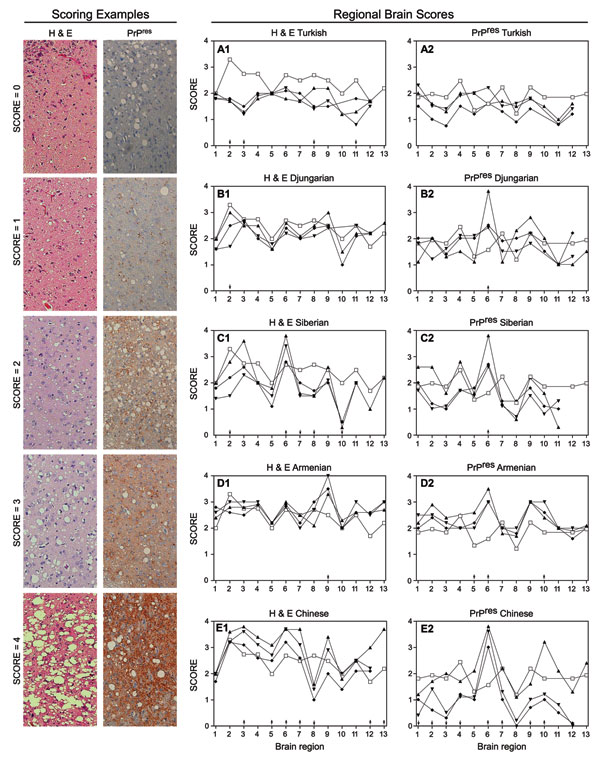Volume 15, Number 2—February 2009
Research
Characteristics of 263K Scrapie Agent in Multiple Hamster Species
Figure 5

Figure 5. Scoring examples: Hematoxylin and eosin (H&E)–stained and proteinase K–resistant prion protein (PrPres) scores from 0 to 4. A score of 0 means no vacuolation or PrPres distribution; a score of 4 means the highest degree of vacuolation and PrPres distribution in that region. Panel H&E score: 0, Chinese hamster olfactory bulb; 1, Syrian hamster spinal cord; 2, Armenian hamster caudate putamen; 3, Armenian hamster cortex; 4, Syrian hamster thalamus. Panel PrPres score: 0, Chinese hamster superior colliculus; 1, Syrian hamster posterior colliculus; 2, Chinese hamster brain stem; 3, Djungarian hamster posterior colliculus; 4, Chinese hamster thalamus. Regional Brain scores: all hamsters were compared with 263K Syrian hamster (□) shown in each panel A1–E1 and A2–E2. Lesion and PrPres profiles of 263K scrapie-infected hamster from each of the 5 new hamster species. Each point represents the average from 6 different animals scored in the following areas: 1, cerebellum; 2, posterior colliculus; 3, superior colliculus; 4, brain stem; 5, spinal cord; 6, thalamus; 7, hypothalamus; 8, hippocampus; 9, cortex; 10, olfactory bulbs; 11, caudate putamen; 12, septal nucleus; 13, tegmentum. ▲, first passage; ▼, second passage; ♦, third passage.